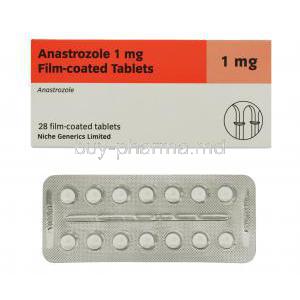Prolia Injection Vial
- Introduction to Prolia Injection Vial
- Composition of Prolia Injection Vial
- Uses of Prolia Injection Vial
- Â
- Off-Label Uses of Prolia
- How Prolia Works: Mechanism of Action
- Dosage and Administration of Prolia
- Â
- Side Effects of Prolia
- Important Precautions When Using Prolia
- Interaction of Prolia With Other Medications
- Storage and Handling Precautions for Prolia
- Â
- Warnings and Contraindications for Prolia Use
- Careful Administration of Prolia
- Conclusion
Introduction to Prolia Injection Vial
Prolia, a medication that includes denosumab5, is an advancement in treating bone loss conditions. A human monoclonal antibody, Prolia specifically focuses on and deactivates the RANK ligand, which plays a crucial role in osteoclast creation, function, and longevity—the cells responsible for breaking down bone. After undergoing research for many years, Prolia received FDA approval in 2010, representing a significant step forward in managing osteoporosis.

Composition of Prolia Injection Vial
- Fundamental Components: Denosumab is the active ingredient in Prolia3, designed to replicate the immune system's natural defenses against the RANK ligand.
- Additional Ingredients: Along with denosumab, the formulation contains excipients like acetic acid, sodium acetate, sorbitol, and sterile water. These components are essential for maintaining the solution's pH balance, osmolarity, and overall stability, guaranteeing the drug's effectiveness and safety during use.
Uses of Prolia Injection Vial
Prolia is mainly used to treat osteoporosis in postmenopausal women and men who are at a higher risk of fractures. These individuals often have bone density levels, making them more susceptible to bone fragility. Additionally, Prolia is prescribed to combat bone density loss in patients receiving cancer treatments, a common side effect that can significantly affect the quality of life for these individuals.
Using Prolia in these situations not only improves bone density but also helps reduce the likelihood of vertebral, nonvertebral, and hip fractures, ultimately decreasing the impact of osteoporotic fractures on overall health.
Off-Label Uses of Prolia
Prolia is well known for its effectiveness in treating osteoporosis. It also shows promise in managing other bone health issues. Researchers are considering using it for bone diseases characterized by excessive bone resorption. Some potential uses being explored include conditions like bone loss due to immobility and rare metabolic bone diseases.
- The way denosumab, the component of Prolia works indicates that it could be helpful in these situations too.
- In terms of applications, there is a growing interest in using Prolia for young patients with conditions affecting bone density and strength. It's important to highlight that the FDA does not currently approve Prolia, and more research is needed to ensure its safety and effectiveness in this population.
How Prolia Works: Mechanism of Action
Prolia works4 by affecting bone metabolism through a biological process. Its active component, Denosumab, tightly binds to the RANK ligand, a protein that regulates the function and survival of osteoclasts—the cells that break down bone tissue. By blocking these cells, Prolia decreases bone turnover, resulting in bone mineral density and stronger bones. This adjustment in bone activity helps decrease the risk of fractures in people with bones.
Dosage and Administration of Prolia
The amount of Prolia needed can vary depending on the patient's condition and the specific reasons for its use.
- Recommended Dosages: To treat osteoporosis in postmenopausal women and men at risk of fractures, it is recommended to administer 60 mg subcutaneously every six months.
- Techniques for Administration: Prolia should be injected subcutaneously in the arm, upper thigh, or abdomen. Healthcare providers should change the injection site with each dose to reduce the chances of side effects.
Following these dosage and administration1 instructions is crucial for maximizing Prolias benefits while minimizing potential risks linked to its usage.
Side Effects of Prolia
Like any medication, prolia can cause effects that range from mild to severe. It is essential to be aware of and identify these effects2 to manage and reduce potential risks associated with its usage effectively.
- Common Side Effects: Patients might experience skin irritation at the injection site, muscle pain, and general symptoms like tiredness and nausea. These effects are usually temporary and can be addressed with standard medical advice.
- Serious Side Effects: Serious issues include the possibility of severe infections, low levels of calcium in the blood, and unusual fractures in the thigh bone. If you experience pain, abnormal swelling, or reduced sensation, seek immediate medical attention.

Important Precautions When Using Prolia
Ensuring the safety of patients using Prolia goes beyond giving the medication. It requires adherence to preventive measures, especially for those with existing health issues.
- For individuals with a history of calcium levels severe kidney problems or immune system disorders extra care should be taken when considering Prolia due, to the possibility of worsening side effects.
- Regular monitoring of bone density, kidney function, and blood calcium levels is crucial to guarantee the medication's effectiveness and prevent any adverse outcomes.
Interaction of Prolia With Other Medications
Polypharmacy is common in treating the conditions that Prolia focuses on. It's important to carefully look into how drugs interact with each other.
- Specific interactions include Prolia potentially interacting with glucocorticoids, which could increase the risk of osteoporosis, and chemotherapy medications, which could worsen bone marrow suppression.
- Dealing with Polypharmacy involves healthcare providers thoroughly checking all the medications a patient uses to improve treatment plans and minimize the chances of interactions.
Storage and Handling Precautions for Prolia
Prolia's effectiveness depends on how it's stored and handled. Mishandling can affect its stability and therapeutic benefits.
- Storage Instructions: Prolia should be kept in a refrigerator between 2°C to 8°C (36°F to 46°F). It should not be frozen. Exposing it to temperatures can alter the active ingredient, denosumab, decreasing its effectiveness.
- Handling Procedures: Healthcare professionals should handle Prolia carefully, ensuring the vial is not vigorously shaken and shielded from direct sunlight before use.

Warnings and Contraindications for Prolia Use
Using Prolia requires consideration to prevent severe health issues1, especially among specific patient groups and individuals with certain health conditions. For patient demographics, it is not recommended to use Prolia if they have a known hypersensitivity to denosumab or its components.
- Moreover, individuals with kidney problems or those undergoing urological procedures should steer clear of Prolia due to the higher risk of developing low calcium levels.
- In cases where individuals have high blood calcium levels or cannot take daily calcium and vitamin D supplements, it is advised to avoid Prolia as it could worsen calcium deficiency.

Careful Administration of Prolia
Extra care is needed when giving Prolia to patients, especially those with other health issues that make treatment more complex.
- Recommendations for the Elderly: Monitor kidney function and calcium levels in this group, as changes in metabolism and medication excretion due to aging can raise the risk of side effects.
Managing Overdosage of Prolia
In case of an overdose of Prolia, it is crucial to conduct immediate clinical assessment and intervention.
- Signs of an overdose may manifest as severe hypocalcemia showing symptoms such, as muscle spasms, convulsions and numbness or tingling in the extremities.
- Treatment protocols involve focusing on symptom management, which may entail administering calcium. It is vital to monitor calcium levels and cardiac function to handle and lessen any potential serious outcomes effectively.

Conclusion
The effectiveness of Prolia in treating bone-related issues is notable. However, the risks and side effects must be weighed. Healthcare professionals should thoroughly evaluate whether Prolia suits each patient based on their health status and any factors that may contradict its use.
Following recommended medication administration protocols, monitoring the patient's health, and educating them on handling possible side effects are crucial steps to enhance treatment results and safeguard patient well-being.








